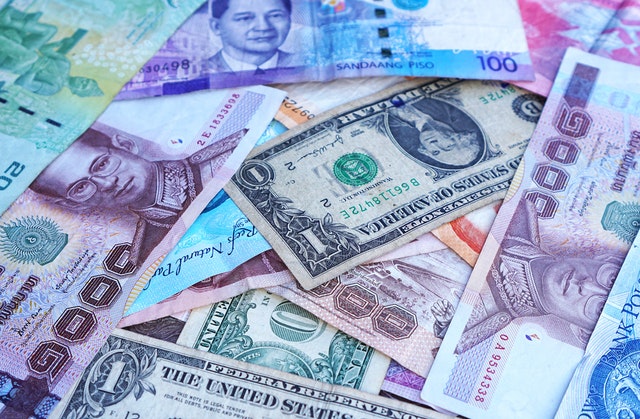Emerging Markets Consumers: Differences and Similarities
 PriceBeam
·
3 minute read
PriceBeam
·
3 minute read

Pricing can be challenging in emerging markets for multinational companies as these markets are typically very different from the developed markets where they are used to do business. However, the demand for these companies’ products is growing, and despite the various challenges that arise for multinational companies swimming in strange waters, these companies maintain a competitive advantage in these markets.
As with anything else, coping with unfamiliarity leads to stereotyping to some extent. The same is true for businesses operating in emerging markets outside their home market, who exhibit a tendency to vastly oversimplify the differences between consumers in emerging markets and developed markets. In this article, we discuss some common perceptions about emerging markets consumers and whether they hold true or not.
#1: The Importance of Price
Before going into this one, let us first make a clear distinction between “price” and “pricing”. The “price” is the amount of money you require your customers to pay to obtain ownership of your product, while your “pricing” is the processes you establish and execute in order to determine what your price should be.
In emerging markets, multinational companies tend to attach too great importance to “price” and too little importance to “pricing”. While it is true that emerging markets consumers generally have lower spending power and willingness to pay due to the lower income level, it is a particularly persistent myth that emerging markets consumers all focus on price.
Just as with developed markets, emerging markets have different consumer segments, each with various degrees of price sensitivity, and therefore, practices such as prestige pricing and value-based pricing are still viable in these markets. Similarly, promotional pricing strategies (if employed correctly) can help companies expand their market share to price sensitive consumers, without tarnishing the company’s brand.
Contrary to belief, there is not a different set of rules that applies to the overall pricing strategy in emerging markets: cachet, price positioning and value-driving features still matter in these markets, and how prices are set relative to each other does not change. What changes, is the overall price level - not the pricing strategies.
#2: The Importance of Product
With the assumed importance of “price” (see above) comes an underestimation of the importance of the product itself. Companies often prioritize cost leadership over product development and innovation in such market, betting the farm on lite-versions that offer a much cheaper product version, and compromising valuable features and functionality in the process.
There is, however, no reason to think that emerging markets consumers do not value state-of-the-art technology, quite the contrary in fact: studies by Boston Consulting Group found that emerging markets consumers gain more utility from state-of-the-art features, whereas consumers in developed markets focuses on whether features solve their problems -- if the features are ground-breaking or not is not important (relatively speaking).
Of course, what makes a valuable product (i.e. a product that drives high willingness to pay) is very different. Preferences, needs, religion, climate and fashion are just some of the factors that require thorough analysis before pricing products. However, the analyses required do not differ that much -- they are merely substituted for “commercial intuition” in home markets. Understanding your customers and what drives value for them is important in all markets.
#3: Life Cycle Stages
This is the first difference on the list; in order to understand the purpose of a given price, it is crucial to understand where said product is in the product life cycle (PLC). The low income-level in emerging economies sets the bar differently in terms of what products are considered a luxury and what products are not. This difference will influence where a product is in its life cycle: for example, the Apple iPhone 5 has reached the decline stage long ago in developed markets, and is merely a price anchor for Apple: however, in some emerging markets the iPhone 5 is still in the growth/maturity stage, and the price should therefore be profit-maximizing rather than optimizing the anchoring context.
#4: Lowering Price vs Size/Quantity
This is one of the dilemmas/trade-offs that companies often balance differently in emerging markets - again, for no apparent reason other than the illusion of low price sensitivity that applies to the entire market. As pointed out above, it is true that some items are considered more luxurious in emerging markets due to the low spending power; however, it is often much better to accommodate this by offering smaller sizes, i.e. a lower quantity but the same quality. In particular, due to the meagre budgets that emerging markets consumers have, the demand for high quantities is not that strong. Therefore, you may be better of maintaining quality and price but lowering the quantity, rather than compromising your quality and lowering prices.
Summary: Exercise Common Sense
The general misconception that we are trying to dispel is that an entirely different set of rules applies to emerging markets. Emerging markets are different, but the principles that are behind successful businesses in developed markets still apply. When you launch your product in a new market, even in developed nations, you will have to adjust; and in emerging markets the adjustments are simply greater and require continuous attention. Emerging markets are challenging, and doing business here is, indeed, very different - but don’t lose common sense.
.png?width=400&height=100&name=PBLogoTransparent%20(1).png)




